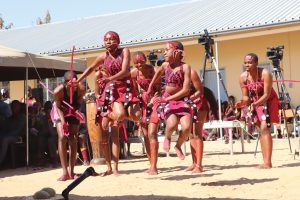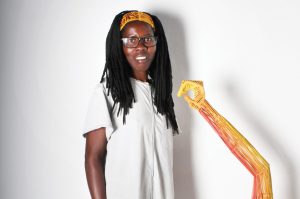
Miss Namibia 2025: Johanna Swartbooi
Johanna Swartbooi of Vaalgras is crowned Miss Namibia 2025 in a dazzling finale held in northern Namibia – a celebration of beauty, purpose and national

By Maggie Forcelledo Paz
When the EU Cultural Relations Platform launched the EU-Namibia Craft Project, it was not just about skills training, it was about honouring heritage, nurturing creativity and building a sustainable future for Namibia’s vibrant artisan communities. The platform has been engaging in the promotion of international cultural relations, creating the conditions for meaningful exchanges between the EU and partner countries since 2020. “Artisans are encouraged to tell a story within the design by using traditional symbols, motifs, colours and patterns, for instance those that are sometimes incorporated into baskets, fabric prints, embroidery and accessories. Some illustrations on products, such as painted ostrich eggs and embroidered linen and cushion covers are inspired by everyday life,” says Annie Symonds, the senior lead consultant for a training workshop held in Windhoek, where artisans from the Khomas and Zambezi regions were afforded hands-on experience in turning their ideas into market-ready products such as jewellery, beadwork and corporate gifts.
According to Symonds, some methods of production involve reviving or adapting traditional techniques through the integration of cultural narratives, which also tells a story about the generations gone before.
“The raw materials used in creating the product may be harvested from local resources and be of particular value to that society. A short story tag or label attached to the product with a photo of the crafter, explaining its origin, or how it was made and who benefits from the sale develops empathy with the buyer,” she adds.
The EU-funded workshops are designed using a training-oftrainers approach, allowing participants to transmit and pass on the skills they acquired to others in their own community, creating a multiplier effect beyond the initial group.
“My general impression of the workshop was positive. I enjoyed the new skills that I’ve learned and gained, and I also got new ideas on how I can incorporate them into the products that I already produce,” says Jason M.S. Hangara, a participant at the workshop. Another participant, Lydia Muyambango, says she really enjoyed the training and adds, “May we continue with this training as it is impactful. When I return to Katima I will work very hard, because they don’t sell products like necklaces, earrings and bangles there. Thank you very much.”
An additional business training workshop was held in the Zambezi Region in June, focusing on product development and business skills while targeting crafts such as pottery, basketry, carving and textiles. The aim of this training was to strengthen both the quality and economic sustainability of local craft practices across different towns, with the ultimate goal of contributing to the inclusive development of the sector and reinforcing Namibia’s creative economy. With every stitch, carve and weave, Namibian artisans are not only preserving the local culture; they are shaping the future of their communities, economy and stories.

Johanna Swartbooi of Vaalgras is crowned Miss Namibia 2025 in a dazzling finale held in northern Namibia – a celebration of beauty, purpose and national

The Day of the African Child honours past struggles while calling for stronger planning and investment in children’s rights – shaping a future where every

Elisia Nghidishange weaves tradition, material memory and contemporary themes into powerful mixed media works – exploring human connection while nurturing creativity in her rural Namibian

With dam levels dropping and drought risks rising, Namibia must urgently rethink water use. From lawns to native plants, this piece explores practical steps for